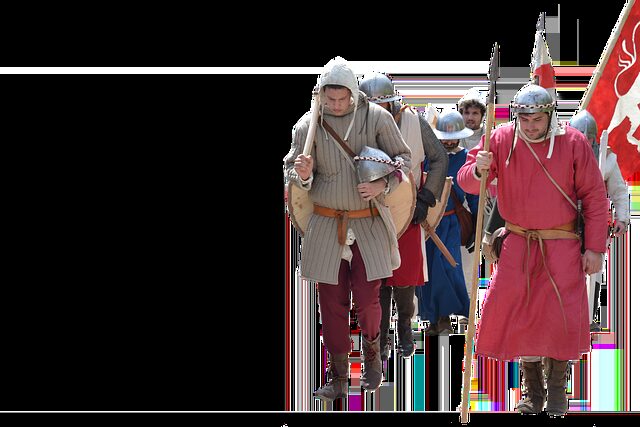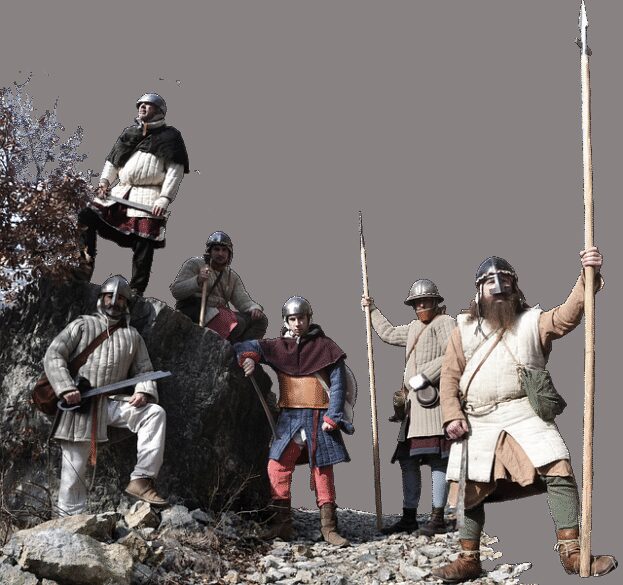Feudalism in Nordic Countries
The intricate tapestry of history woven by the feudal structures in the Nordic countries reveals a complex blend of social, economic, and political elements. This article delves into the nuances of feudalism in Nordic countries, examining its diverse impacts and the subtle distinctions between serfdom and feudalism in the Scandinavian context.
As we explore the different facets of medieval society in Norway, Denmark, and Sweden, we unveil the profound transformations that took place during a period that bridged the gap between the Viking Age and the modern era. The following sections will guide you through the historical landscape of feudalism in Nordic countries.
- Could the introduction of feudalism to Scandinavia have been prevented?
- What was the impact of Norwegian serfdom on lower-class farmers?
- How did feudalism affect the kingdoms of Denmark and Sweden?
- What were the key features of feudalism in Norway?
- How did the transition from Viking Age influence feudal structures?
- What are the differences between serfdom and feudalism in Nordic contexts?
- How did Christianity reshape society during the Middle Ages in Scandinavia?
- Could the introduction of feudalism to Scandinavia have been prevented?
- What was the impact of Norwegian serfdom on lower-class farmers?
- How did feudalism affect the kingdoms of Denmark and Sweden?
- What were the key features of feudalism in Norway?
- How did the transition from Viking Age influence feudal structures?
- What are the differences between serfdom and feudalism in Nordic contexts?
- How did Christianity reshape society during the Middle Ages in Scandinavia?
Could the introduction of feudalism to Scandinavia have been prevented?
The question of whether the introduction of feudalism to Scandinavia was an inevitable occurrence or a preventable phenomenon remains a subject of historical debate. Feudal structures, often characterized by the allocation of land in exchange for military service, gradually made their way into the Scandinavian social fabric.
Many historians argue that the potent combination of internal strife and external pressures may have left the Nordic kingdoms with little choice but to adopt feudal-like practices. Moreover, the rise of Christianity and the need for more organized military structures could have accelerated this transition.
However, some suggest that the unique geography and resilient communal traditions of the region could have allowed for an alternative path, one that did not require a feudal framework. Ultimately, the nuances of this transformation are reflective of a broader European trend that the Nordic countries could not entirely evade.
What was the impact of Norwegian serfdom on lower-class farmers?
Norwegian serfdom, though not identical to the classic European model, had a profound impact on lower-class farmers. Defined by an evolving system from around 1750, it created a stratified society where the distinctions between landowners and tenant farmers became increasingly pronounced.

In regions like Hedmark, the exploitation of these farmers underpinned a solidifying social hierarchy. Nevertheless, the experience of serfdom varied across Norway, with some areas maintaining a degree of equality among farms. Inheritance laws that favored younger sons resulted in fragmented farms, further complicating the lives of lesser farmers.
Despite the challenges, the transition to independence for smaller homesteads did occur over time, leading to a significant migration of Norwegians to America. These migrants carried with them folk traditions and medieval music, preserving their cultural heritage across the Atlantic.
How did feudalism affect the kingdoms of Denmark and Sweden?
In Denmark, the introduction of feudal elements had destabilizing effects, particularly in the financial realm. Tax exemptions granted to vassals eroded the fiscal base needed for a strong central authority, weakening the position of the king.
Sweden faced similar challenges, with a robust nobility curbing the influence of its monarchy. This led to a fragmented noble republic, where the king’s power was substantially limited. The overarching question that arises is whether the introduction of feudal practices truly benefited these kingdoms or merely contributed to their decline.
Norway’s own encounter with feudalism under Haakon VI saw an initially independent kingdom grapple with the complexities of integrating feudal elements into its military and governance structures, ultimately raising questions about the efficacy of such reforms.
What were the key features of feudalism in Norway?
The key features of feudalism in Norway were intertwined with the country’s social and political landscape. Central to this system was the relationship between landowning nobles and the lesser farmers who worked the land. The uneven distribution of power and wealth played a significant role in shaping the rural communities.

The obligations and rights between lords and vassals, although not as pronounced as in other European nations, were marked by a series of legal and customary practices. These arrangements led to a feudal framework that was distinctly Norwegian, reflecting the local conditions and customs of the time.
Additionally, the influence of the church and the crown in land distribution and governance further complicated the feudal system in Norway, adding layers of ecclesiastical and royal oversight to the societal structure.
How did the transition from Viking Age influence feudal structures?
The end of the Viking Age around 1050 AD marked a significant shift in Scandinavian society, paving the way for the establishment of feudal structures. The transition from a culture renowned for its seafaring prowess to one that embraced feudal hierarchies was not abrupt but rather a gradual evolution.
The decline of traditional Viking practices, coupled with the rise of Christianity, played crucial roles in this transformation. Kings and nobles began to use feudal relationships to consolidate power and organize military resources, seeking to adapt to a changing world.
Despite these shifts, elements of the Viking social order persisted, influencing the distinctive nature of feudalism in the Nordic countries. The complex interplay between old and new societal norms would come to define the medieval period in Scandinavia.
What are the differences between serfdom and feudalism in Nordic contexts?
- Serfdom in the Nordic countries often involved less rigid ties to the land compared to traditional European serfdom.
- Feudalism in Scandinavia was marked by a more pronounced role of the crown and the church in societal governance.
- The Nordic model of feudalism and serfdom reflected regional traditions and legal practices, setting it apart from the rest of Europe.
How did Christianity reshape society during the Middle Ages in Scandinavia?
The spread of Christianity across the Nordic countries during the Middle Ages brought about a sweeping transformation of society. As pagan rituals diminished, the new religion introduced by kings for both spiritual and strategic reasons redefined social and political structures.

Christianity’s influence extended to burial practices, ecclesiastical power, and even the very nature of kingship. The adoption of Christian norms and laws played a critical role in the development of medieval society in Scandinavia, forging a complex religious landscape that would shape the region for centuries to come.
Moreover, the church became a major landowner and a central figure in the administration of justice, further intertwining religious and secular authority and contributing to the region’s unique version of feudalism.
For a visual exploration of the topic, watch this informative video:
The legacy of feudalism in the Nordic countries is a testament to the enduring impact of historical structures on society. From the evolution of Norwegian serfdom to the influence of Christianity, the remnants of these systems continue to be felt in the cultural and historical narratives of Scandinavia. This exploration offers a glimpse into the rich tapestry of the past, one that continues to captivate and inform the present.

